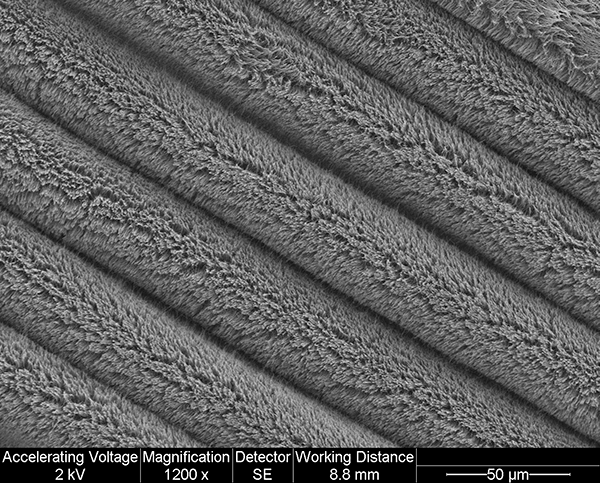Nanotube Forests Could Lead to Stretchable Supercapacitors
| 20-06-2019 | By Rob Coppinger
How Do Carbon Nanotubes Work?
Forests of carbon nanotubes can act as a supercapacitor which is both stretchable and thin, key features for any self-powered wearable electronics’ power systems.
Bulky batteries could make wearable electronics uncomfortable and so a solution is self-powered devices, perhaps from a person’s movement, and these energy systems would be helped by supercapacitors. Friction may also be a source of energy that would feed the supercapacitor. Michigan State University researchers have created a supercapacitor that can be stretched to 800% of its original size for thousands of stretching, relaxing cycles, making it suitable for clothing. It can be stretched because at the heart of the capacity is a forest of vertically aligned Carbon NanoTubes (CNT), which have been crumpled, and are able to be stretched.

For emerging wearable tech to advance, it needs improved power sources. Now researchers from MSU have provided a potential solution via crumpled carbon nanotube forests, or CNT forests. Credit: Chanyong Cao/MSU
“Our current work is developing a combined device, so we have an energy harvester, integrated with the supercapacitor, so this can be an integrated generator, integrated into your shoes for example,” said Michigan State University soft machines and electronics laboratory director, Changyong Cao. “We use piezoelectrics to generate electricity [from movement].” After fabrication, Cao does not expect such a supercapacitor to need maintenance.
Forests
Those vertically aligned crumpled carbon nanotubes are 10 to 30 micrometres high. This vertical, interconnected forest has, according to Michigan State University, a larger surface area and can be easily modified by adding nanoparticles of different materials. That forest of nanotubes sits on a substrate. “The substrate we use is 0.5mm thick, it can be thinner, but a little thicker it will be more robust, and you don’t need to worry about current leakage or other problems,” said Cao. Other designs have less efficiency as they can only be stretched in one direction, or the cycling breaks them, he added.
Metal oxide nanoparticles can be impregnated into the crumpled nanotubes and this is expected to improve the supercapacitor’s energy efficiency. “We include metal oxide nanoparticles because it is easier to impregnate it with them. We only need to spray a nano solution, so it is easy to sink [the metal oxide] into the CNT forest,” Cao explained. He explained that an energy system may require pseudocapacitance and that metal oxide can also provide pseudocapacitance to increase the system’s overall power density. Pseudo capacitance is a property akin to a capacitor.
This supercapacitor technology is also expected to find uses in implantable biomedical devices and smart packaging systems. For medical applications, the supercapacitors can enable a self-powered device which could be used for monitoring patient improvement or detect disease. Researchers from the United States Naval Research Laboratory, Duke University, Massachusetts Institute of Technology and China’s Huazhong University of Science and Technology contributed to this work. The research has been funded in part by the United States’ Department of Agriculture and the US government’s National Science Foundation.
